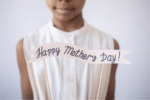
As people become increasingly aware of the potential health risks associated with traditional paints, many are turning to nontoxic alternatives for their interior spaces. Nontoxic paint types not only provide a safer option for you and your family but also help reduce environmental impact.
In this blog post, we will explore various nontoxic paint types, discuss their benefits, and offer guidance on selecting the perfect eco-friendly paint for your home while providing tips on how to utilise them effectively.
1. Understanding the dangers of traditional paints
Traditional paints often contain chemicals known as volatile organic compounds (VOCs), which can evaporate into the air and contribute to indoor air pollution. Exposure to VOCs has been linked to various health issues, including headaches, dizziness, respiratory problems, and even long-term damage to the liver, kidneys, and central nervous system.
By choosing nontoxic paints, you can minimise these risks and create a healthier living environment.
How to utilise:
- Educate yourself on the potential dangers of traditional paints
- Research and choose nontoxic alternatives for your home projects
2. Low-VOC and Zero-VOC paints
One of the most accessible alternatives to traditional paints is low-VOC and zero-VOC paints. These options have significantly reduced VOC content, providing a more eco-friendly choice.
How to utilise:
- Look for paints labeled as low-VOC or zero-VOC
- Ask your local paint store for recommendations on eco-friendly brands
- Read product labels and select paints with third-party certifications, such as Green Seal or Greenguard
3. Natural paints
Natural paints are derived from plant-based materials, minerals, and other eco-friendly sources. They typically contain little to no VOCs and offer a sustainable alternative to conventional paints.
How to utilise:
- Research natural paint brands and their ingredients
- Consider using natural paints for interior walls, ceilings, and trim
- Ensure proper ventilation during application and drying
4. Milk paint
Milk paint is an ancient, nontoxic paint made from milk protein (casein), lime, and natural pigments. It provides a unique matte finish and is ideal for furniture, walls, and other interior surfaces.
How to utilise:
- Purchase milk paint in powder form and mix it with water according to the manufacturer's instructions
- Apply milk paint with a brush or roller for a smooth, matte finish
- Seal with a nontoxic topcoat for added durability
5. Chalk paint
Chalk paint is a water-based, nontoxic paint that dries to a velvety, matte finish. It's particularly popular for furniture and cabinetry, as it requires minimal surface preparation and can be easily distressed for a vintage look.
How to utilise:
- Choose chalk paint for furniture, cabinetry, and accent pieces
- Clean and lightly sand surfaces before applying chalk paint
- Apply multiple thin coats for even coverage and allow each coat to dry before applying the next
6. Mineral paint
Mineral paint is a water-based, nontoxic paint made from inorganic minerals, such as potassium silicate. It is highly durable, breathable, and resistant to mould and mildew, making it an excellent choice for interior walls and surfaces.
How to utilise:
- Select mineral paint for walls in damp or humid areas, such as bathrooms and basements
- Apply mineral paint with a brush or roller, following the manufacturer's guidelines for coverage and drying times
- Use mineral paint on porous surfaces, such as brick or stone, to maintain breathability
7. Choosing the right nontoxic paint for your home
When selecting a nontoxic paint for your interiors, consider the following factors:
- VOC content: opt for low-VOC or zero-VOC options to minimise indoor air pollution
- Ingredients: research the paint's ingredients to ensure they meet your safety and environmental standards
- Certifications: look for third-party certifications, such as Green Seal or Greenguard, to validate the paint's eco-friendly claims
- Performance: consider factors like coverage, durability, and ease of application
- Colour and finish: choose from the wide range of available colours and finishes to match your desired aesthetic
How to utilise:
- Determine the specific needs and requirements of your interior painting project
- Compare nontoxic paint options based on VOC content, ingredients, certifications, performance, and aesthetics
- Test paint samples on small areas before committing to a full-scale project
Conclusion: Nontoxic paint types for your interiors
Nontoxic paint types offer a safer, more environmentally friendly alternative to traditional paints for your home's interiors.
By understanding the dangers of conventional paints and exploring various nontoxic options, such as low-VOC and zero-VOC paints, natural paints, milk paint, chalk paint, and mineral paint, you can make an informed decision that benefits your health, your home, and the planet.
Consider factors like VOC content, ingredients, certifications, performance, and colour when selecting the perfect nontoxic paint for your space, and follow the tips provided to utilise these eco-friendly options effectively in your home projects or you can skip all those tasks and get in touch with Groovy Hues and let them handle all the work that needs to be done.













